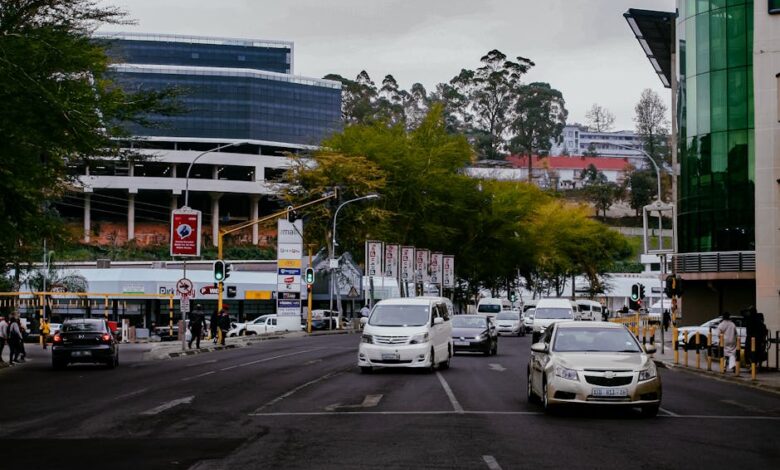Explosion, Vehicle Fire Rock Faraday Future’s LA Headquarters: What It Means for EV Startups

Explosion, Vehicle Fire Rock Faraday Future’s LA Headquarters: What It Means for EV Startups
Estimated Reading Time: 7 minutes
- Faraday Future’s LA headquarters suffered an explosion and vehicle fire, rendering the facility unusable and highlighting critical safety risks.
- The incident underscores the inherent dangers of high-voltage EV battery systems and the challenges of pioneering new, untested technologies.
- Compounding FF’s issues, the facility’s lease is expiring, with the landlord actively seeking new tenants, adding significant operational instability.
- This event serves as a crucial warning for all EV startups, emphasizing the need for robust safety protocols, proactive crisis management, and strategic facility planning.
- Businesses in high-risk industries must prioritize comprehensive risk assessment, transparent communication, and flexible real estate strategies to ensure business continuity and resilience.
- The Incident Unfolds: What Happened at FF’s LA Hub?
- Faraday Future’s Rocky Road: A History of Hurdles
- Beyond the Blaze: Ramifications for EV Startups and Facility Management
- Conclusion
- Frequently Asked Questions (FAQ)
The burgeoning electric vehicle (EV) industry is often painted with strokes of innovation, sustainability, and disruption. Yet, beneath the polished facade of sleek designs and groundbreaking technology, the challenges of pioneering new manufacturing processes and managing complex facilities are ever-present. For California-based EV startup Faraday Future (FF), these challenges recently manifested in a dramatic and concerning incident at its Gardena, Los Angeles headquarters: an explosion followed by a vehicle fire.
This event not only casts a shadow over FF’s already tumultuous journey but also serves as a potent reminder for all aspiring and established EV companies about the critical importance of safety protocols, robust facility management, and proactive crisis planning. The incident, while thankfully resulting in no physical harm, has far-reaching implications, extending from immediate operational disruption to long-term strategic real estate decisions.
The Incident Unfolds: What Happened at FF’s LA Hub?
Reports surfaced detailing a significant incident at Faraday Future’s main Los Angeles facility. The event involved an explosion, which was quickly followed by a vehicle fire. While the exact cause and sequence of events are still under investigation, the nature of the incident – a fire involving a vehicle, presumably an EV prototype or test unit – highlights inherent risks associated with high-voltage battery systems and innovative, untested technologies.
Emergency services responded promptly to the scene, working to contain and extinguish the blaze. The priority, as always in such situations, was to ensure the safety of personnel. Thankfully, this crucial objective was met, but the structural integrity of the facility itself was severely compromised. The aftermath presented a grim picture of damage, affecting not just the immediate area of the fire but the building as a whole.
“There were no injuries, but the building has been deemed unfit for occupation. Faraday’s landlord is currently trying to find a new tenant as the EV startup’s lease is expiring.”
This verbatim fact underscores the severity of the damage and introduces a critical layer of complexity to Faraday Future’s situation. The designation of the building as “unfit for occupation” means a complete cessation of operations at that location, forcing FF to immediately reconsider its operational footprint. More pressing, however, is the revelation that Faraday Future’s lease is expiring. This timing, coupled with the landlord actively seeking a new tenant, paints a stark picture of a company potentially without a physical home for its LA operations in the near future, independent of the fire’s direct impact.
Such an incident, particularly one involving an explosion and fire in a facility housing advanced EV development, raises immediate questions about safety standards, material handling, and the management of prototypes. For a company like Faraday Future, which operates at the cutting edge of automotive technology, the need for stringent safety measures is paramount, not just for employee well-being but also for protecting valuable intellectual property and maintaining operational continuity.
Faraday Future’s Rocky Road: A History of Hurdles
The incident at the LA headquarters is unfortunately not an isolated challenge for Faraday Future; rather, it’s another chapter in a long and often turbulent saga. Founded with ambitious goals to redefine mobility and compete with automotive giants, FF has consistently faced an uphill battle. Its journey has been characterized by grand announcements followed by significant delays, financial woes, and frequent shifts in strategy and leadership.
From early visions of multiple vehicle lines and a sprawling Nevada factory, FF has scaled back its ambitions considerably, focusing almost exclusively on its ultra-luxury FF 91 model. Production of the FF 91 has been plagued by funding shortfalls, supply chain disruptions, and internal conflicts. Investors have poured billions into the company, yet profitability and consistent production remain elusive targets. The company has navigated delisting threats from NASDAQ, engaged in complex financing deals, and repeatedly pushed back delivery timelines for its flagship vehicle.
This latest facility incident compounds Faraday Future’s already precarious position. Beyond the direct damage and logistical nightmare, there’s the inevitable hit to public perception and investor confidence. For a company desperately trying to demonstrate stability and deliver on its promises, a high-profile safety incident, even one without injuries, can erode trust. It raises questions about the company’s operational rigor and its ability to manage the complex, high-risk environment of EV development and nascent production. The expiring lease and the landlord’s search for a new tenant further underscore the potential instability surrounding the company’s long-term operational plans in the region.
The challenge for FF now extends beyond fixing a damaged building; it involves reassuring stakeholders, demonstrating a clear path forward amidst operational disruption, and proving its resilience in the face of yet another significant setback. The ability to pivot, adapt, and learn from such an event will be crucial for the company’s survival and its long-term viability in the fiercely competitive EV landscape.
Beyond the Blaze: Ramifications for EV Startups and Facility Management
While the focus is rightly on Faraday Future, the incident carries broader lessons for the entire electric vehicle industry, particularly for agile and often resource-constrained startups. Developing and producing EVs involves working with high-energy battery packs, advanced electronics, and potentially volatile materials. This environment demands an unwavering commitment to safety and robust facility management practices.
For any company engaged in R&D, prototyping, or manufacturing involving lithium-ion batteries, the risk of fire and explosion is a serious consideration. Battery thermal runaway incidents, though rare, can be extremely destructive. This necessitates specialized fire suppression systems, strict material handling protocols, isolated testing areas, and continuous employee training on emergency procedures. An incident like FF’s highlights the need for proactive investment in these areas, rather than reactive measures after a crisis.
Moreover, the incident shines a light on the often-overlooked aspect of business continuity and real estate strategy. For an EV startup, operational facilities are vital for R&D, testing, and production. Losing access to a key facility, especially unexpectedly, can halt progress and drain crucial resources. This underscores the need for flexible real estate strategies, contingency plans for facility disruption, and a thorough understanding of lease agreements and their implications during unforeseen circumstances.
Actionable Steps for Businesses in High-Risk Industries:
- Implement a Comprehensive Risk Assessment and Mitigation Program: Regularly conduct detailed risk assessments tailored to your specific operations, especially if dealing with high-voltage systems, volatile chemicals, or new technologies. Identify potential hazards (e.g., battery thermal runaway, chemical spills), assess their likelihood and impact, and develop clear mitigation strategies. This includes investing in specialized fire suppression (e.g., for lithium-ion battery fires), robust ventilation systems, and emergency isolation procedures. Don’t just check boxes; foster a culture of safety.
- Develop and Practice a Robust Crisis Communication Plan: In the age of instant information, how your company communicates during and after an incident is as critical as the emergency response itself. Establish clear protocols for internal and external communication. This includes designating a crisis communication team, drafting pre-approved statements, identifying key stakeholders (employees, investors, media, customers), and utilizing various channels effectively. Transparency and speed, coupled with accuracy, are paramount to maintaining trust and managing public perception.
- Proactive Facility and Lease Management with Contingency Planning: For businesses reliant on physical infrastructure, understanding and actively managing facility risks is crucial. This involves not only safety audits but also strategic lease management. Understand lease expiration dates, renewal options, and clauses related to property damage and business interruption. Develop contingency plans for temporary operational relocation or alternative work arrangements in case a facility becomes unusable. For startups, consider flexible lease terms or modular facility options to adapt to unforeseen circumstances.
Real-World Example: Lessons from a Battery Manufacturing Fire
Consider the major fire that occurred at a South Korean battery manufacturing plant in 2012, which involved a significant number of lithium-ion cells. While the scale and specific cause differed from Faraday Future’s incident, the aftermath provided crucial lessons. The company faced not only immense financial losses from the destroyed facility and inventory but also a severe blow to its reputation and production capacity. The subsequent investigation led to a complete overhaul of its safety protocols, including stricter storage requirements for raw materials and finished battery packs, enhanced fire detection and suppression systems specifically designed for lithium-ion fires, and more frequent, rigorous safety drills. Their recovery hinged on a transparent communication strategy and a demonstrable commitment to implementing industry-leading safety standards, which eventually helped rebuild trust and secure new contracts.
Conclusion
The explosion and vehicle fire at Faraday Future’s LA headquarters serve as a stark reminder of the inherent risks in pioneering new technologies, particularly within the fast-evolving electric vehicle sector. While thankfully no injuries were reported, the incident has left FF’s facility unusable and highlighted critical vulnerabilities regarding operational stability, facility safety, and strategic planning. The coincidence of the expiring lease and the landlord’s immediate search for a new tenant further underscores the complex challenges facing the company.
For EV startups and high-risk industries alike, the lessons are clear and undeniable: proactive safety measures, comprehensive risk assessments, and robust crisis management plans are not optional extras, but fundamental pillars of sustainable business. The ability to navigate unexpected setbacks, communicate effectively, and maintain operational resilience will ultimately determine which innovators thrive and which falter in the competitive landscape of tomorrow. Faraday Future’s ongoing journey will undoubtedly be closely watched as it seeks to overcome this latest, significant hurdle.
Frequently Asked Questions (FAQ)
Q1: What happened at Faraday Future’s LA headquarters?
A: Faraday Future’s Gardena, Los Angeles headquarters experienced an explosion followed by a vehicle fire. The incident resulted in severe damage, rendering the building unfit for occupation.
Q2: Were there any injuries during the incident?
A: Thankfully, no injuries were reported from the explosion and vehicle fire at Faraday Future’s facility.
Q3: What are the broader implications of this incident for other EV startups?
A: The incident serves as a critical reminder for all EV startups about the inherent risks associated with high-voltage battery systems and new technologies. It highlights the paramount importance of robust safety protocols, facility management, and proactive crisis planning to ensure operational continuity and protect assets.
Q4: How does this incident impact Faraday Future’s operational stability?
A: The incident severely impacts FF’s operational stability, as their primary LA facility is now unusable. Compounding this, their lease is expiring, and the landlord is seeking new tenants, potentially leaving FF without a physical base for its LA operations. This adds significant logistical and strategic challenges to the company’s already turbulent journey.
Q5: What are key actionable steps for businesses in high-risk industries regarding safety and planning?
A: Key steps include implementing comprehensive risk assessment and mitigation programs, developing and practicing robust crisis communication plans, and engaging in proactive facility and lease management with contingency planning. These measures are vital for preventing incidents, managing their aftermath, and ensuring business continuity.





